Learn why your current performance tracking methods aren’t working and how to fix them.
Over 80% of HR leaders think performance management is ineffective at achieving its primary objective.[1] If you’re a part of this majority, it’s time to rethink how you’re measuring and managing employee performance.
HR managers and team leaders who want to improve their company's employee performance practices and tools can start here to understand where the biggest opportunities lie and what it would take to make meaningful change.
Our strategies are backed by Gartner research and surveys with peers in your function[1, 2] so you can take a more targeted, data-backed approach.
Ahead, we’ll take a look at why your current performance tracking tactics might not be working and introduce three new strategies worth adding to your performance management process.
First: Here’s why your current employee performance tracking tactics probably aren’t working
1. Your evaluation process hasn’t been adapted for hybrid and remote work environments
Remote and hybrid work environments went from being the exception to the standard in 2020, and by the end of 2023, 48% of knowledge workers will be working in hybrid and fully remote environments.[3]
Many organizations have failed to consider whether their approach to performance evaluations needs to be updated to reflect this new work environment, but there’s evidence that hybrid and remote workers prefer to be measured based on outcome-based parameters rather than behavior-based ones.

We’ll touch on how to prioritize outcome-based parameters later on when we introduce effective employee performance tracking strategies.
What to look out for
In order to determine whether your performance review process is putting to much weight on employees’ behavior, consider whether the following factors influence evaluations:
Perceived engagement level—for example, how vocal an employee is during a virtual meeting.
Participation in non-mandatory work activities such as coffee chats or happy hours.
Work attendance, which can be less predictable for those with chronic mental or physical health issues or caretaking responsibilities.
2. There’s bias in your performance evaluation process
Everyone is susceptible to bias, but if steps aren’t taken to recognize and work against unconscious biases, they can have a negative effect on your performance evaluation process.
In fact, 62% of HR business partners selected performance management as susceptible to bias at their organizations.[4] This is a problem, because biased performance evaluations can demotivate your workforce, reduce productivity, and increase employee attrition—we’ll provide more advice on how to reduce bias in the performance management process further down.
What to look out for
Below, we’ve listed some warning signs that could mean bias is affecting your performance management process.
A demographically similar leadership bench: Are the same kinds of people being promoted?
Identical evaluation outcomes within a team: Are employees receiving the same score or rating? This could be a sign of leniency bias.
Bookmark for later: Hiring Bias: 3 Types Recruiting Leaders Should Be Aware Of
3. You’re not leveraging software
Lastly, if you’re not using software to support employee performance tracking, you’re missing out on valuable analytics. Self- and manager-evaluations have their place, but when it comes to employee performance, you need data to remove any ambiguity from employee performance assessments.
360 degree feedback software, as well as performance management software and project management tools, can all be helpful for this. For example, project management tools can shed light on how communicative a team member is and whether they hit the majority of their deadlines. Further, performance management platforms can be used to set and track employees’ progress toward goals, and 360 degree feedback tools can be used to guide teams through the process of giving and requesting feedback from peers and leaders.
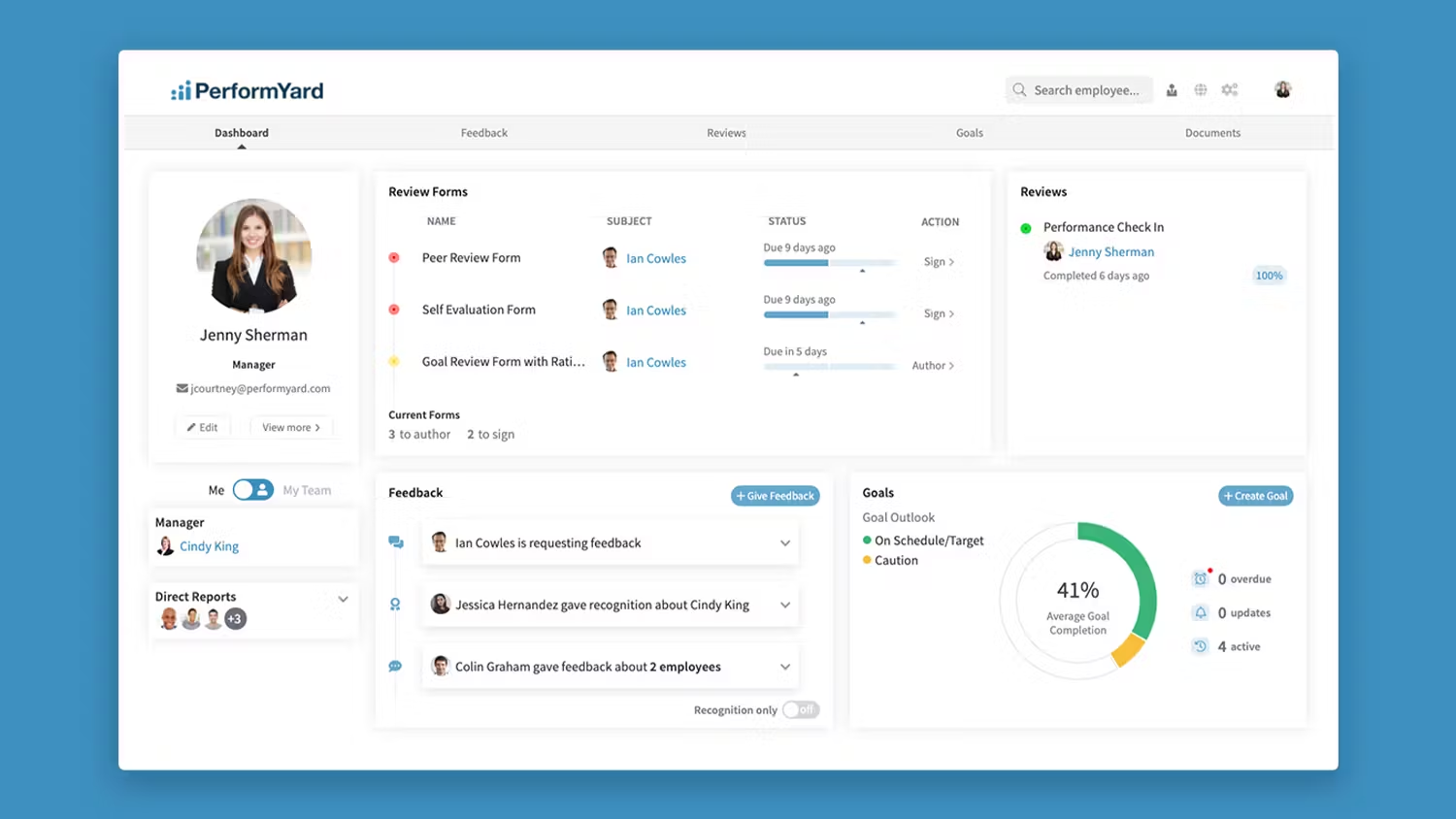
A dashboard gives an overview of an employee’s goal completion in PerformYard (Source)
You don’t need to invest in a new tool to make your performance management process effective. However, we do suggest using the features available in your current tech stack, whether that be the reporting functionality of your HR software or the task tracking feature of your project management tool.
What to look out for
Without the right tools in place to enable your performance management process, you might experience the following:
Low participation levels: Whether they’re asked to complete a survey or fill out an IDP, are employees doing what’s asked of them?
Lack of quantitative data: Are the metrics used to measure an employee’s performance easily accessible?
General lagging: If the process is taking longer than expected, managers and employees may not understand the steps of the process they’re expected to participate in.
3 effective employee performance tracking strategies to implement
Next, let’s look at three strategies you can use to improve the effectiveness of your performance evaluation process.
1. Track individual and team progress toward shared goals
Tracking team goals helps connect individual employees to their business unit and the organization at large, which is particularly important for remote and hybrid workers. For that reason alone, it’s worth evaluating team performance in addition to individual performance, but this tactic also supports employees’ desire to be evaluated on outcome-based parameters rather than just fulfillment of their job accountabilities.
Obviously, individual performance should still factor into employee assessments, but without considering how the team they’re a part of is performing, crucial context is lacking.
To strike the balance between assessing an individual based on solo and team performance, use the following best practices:
Clearly define both individual and team goals and make them easily accessible within your performance management, 360 degree feedback, or human capital management suite. We suggest following the SMART model when defining goals, which we’ve covered in depth before on the blog.
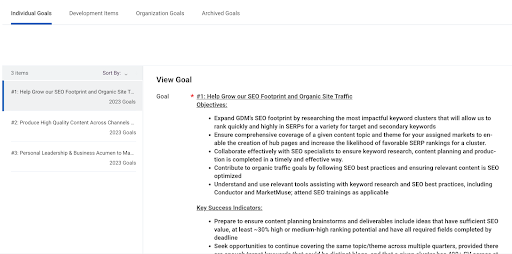
A screenshot of Workday HCM shows individual and organization goals
Set KPIs for individual and team goals. KPIs can be thought of as milestones your team will hit on the way to accomplishing a goal. For example, you may set a goal for your sales team to double their average deal size by the end of the year, and the KPIs you’d use would be the number of contracts signed per quarter and the dollar value of new contracts signed.
Communicate goals regularly during team meetings, employee one-on-ones, and performance reviews. Make sure that your team is aware of the KPIs you’ll be tracking, and how individual and team goals contribute to larger business initiatives. By regularly discussing team goals, you will reinforce, remind, and align employees on shared objectives.
2. Use objective data to lower the risk of biased evaluations
As we mentioned earlier, bias can negatively impact the performance evaluation process. To overcome this, HR leaders and team managers need to educate themselves on unconscious biases and use objective data to support their evaluations.
However, while nearly 80% of HR leaders say their organization offers unconscious bias training, 42% of employees feel underrepresented talent is not equally considered for progression at their organization.[5] In other words, bias continues to pervade talent decisions, despite efforts to shift employee and leader mindsets.
Common types of bias in performance management:
Halo/Horn Effect: Managers might give less challenging goals and opportunities to certain employees because of a single trait they ascribe to them.
Recency Bias: Managers might weigh an employee’s recent performance more heavily than work earlier in the evaluation cycle.
Ingroup Bias: A manager might give higher performance ratings to employees with similar backgrounds rather than to employees from different groups.
Unfortunately, educating employees on unconscious biases is not enough:[6]
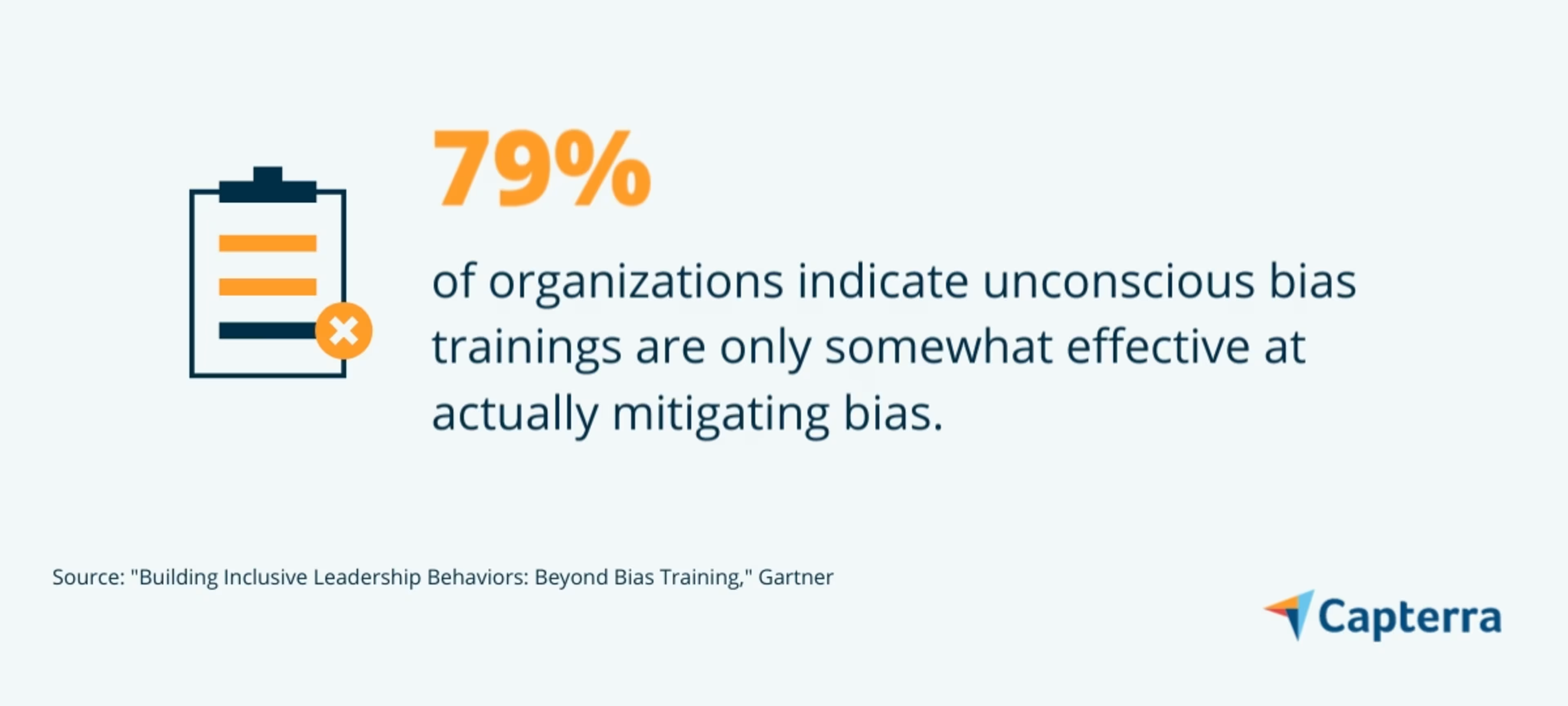
That’s not to say you should skip the bias awareness training—which can still be valuable for giving leaders a vocabulary, framework, and the authority to talk about complicated issues on their teams. Instead, encourage managers to focus on using objective data as the basis of their employee assessments.
Related: What is Talent Analytics?
Obviously, the metrics that should be considered when evaluating employee performance differ depending on the role and business function. To continue with the example of evaluating a member of a sales team, you might factor in the number of sales per employee, the sales closing ratio, and the sales cycle length in order to gain a full picture of their performance.
/ Tech tip
Use the analytics features of your collaboration or project management software to pull data for performance reviews.
3. Collect peer assessments and self reviews
“Immediate hierarchy” (meaning, an employee’s direct manager or their manager’s manager) remains the most common evaluation source for remote, hybrid, and on-site workers.[7] Despite this, it’s becoming increasingly necessary to include additional inputs to employee performance evaluations.
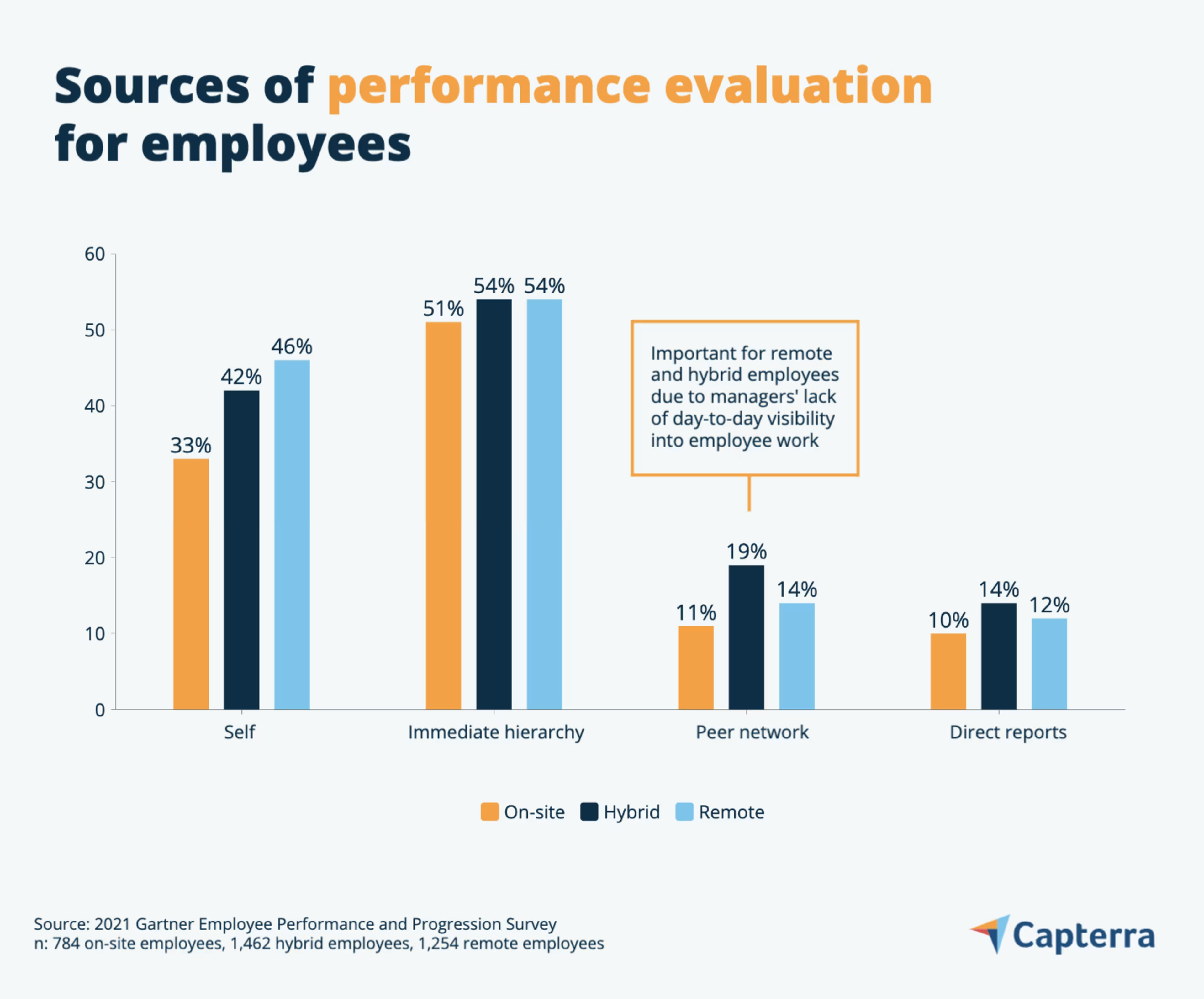
Incorporating an employee’s peers’ perspective into their performance review can help improve accuracy and build trust during the evaluation process. Further, it provides an opportunity for those they work closely with to provide positive feedback that can later be passed on to the employee (and in turn, improve their engagement).
Self-evaluations are equally important as they require employees to reflect on their performance (both successes and failures) over the last six months to a year. You can also prompt employees to set their own career goals or identify skills they’d like to develop. Doing this opens up the door to discuss development goals so you can learn how to better support a team member’s aspirations.
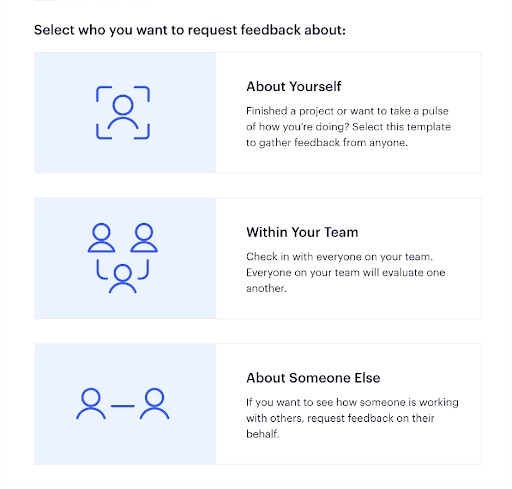
Reflektive prompts a user to submit feedback on anyone in the organization[8]
Overcome the hurdles and start tracking employee performance like a pro
Only a little over a third (38%) of HR leaders agree that performance management keeps pace with business needs.[9] If you’re stuck with an outdated approach to employee performance management, use the three strategies we covered in this guide to get your process back on track:
Track individual and team progress toward shared goals
Use objective data to lower the risk of biased evaluations
Collect peer assessments and self reviews
And to recap, here are three types of software you can use to support your performance management process:
360 degree feedback software: These tools help facilitate the feedback process by prompting and collecting input from employees, their managers, and their peers.
Performance management software: Beyond collecting feedback, performance management platforms can be used to set goals and objectives, create individual development plans, and identify top performers and underperformers.
Project management software: Project management tools allow you to track your team’s progress on different initiatives in real time. You can use these platforms to gather important employee performance metrics such as task completion rate, average task time, and effort variance.
One final suggestion is to meet with your CHRO or CEO to determine which hurdles your organization currently faces when it comes to performance management. This will help you decide if the strategies in this guide are relevant and whether it’s necessary to invest in new tools or expand your current software capabilities.

